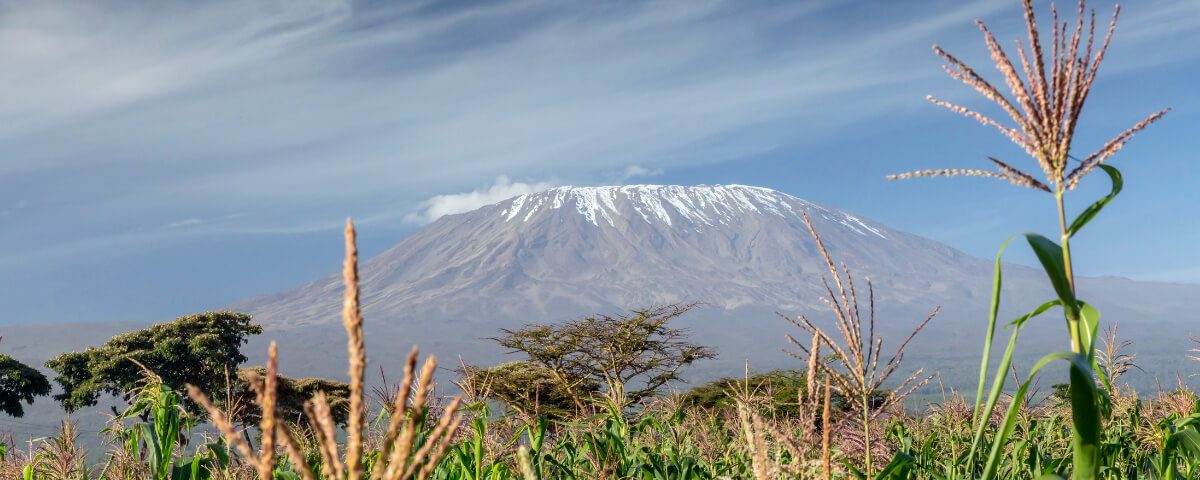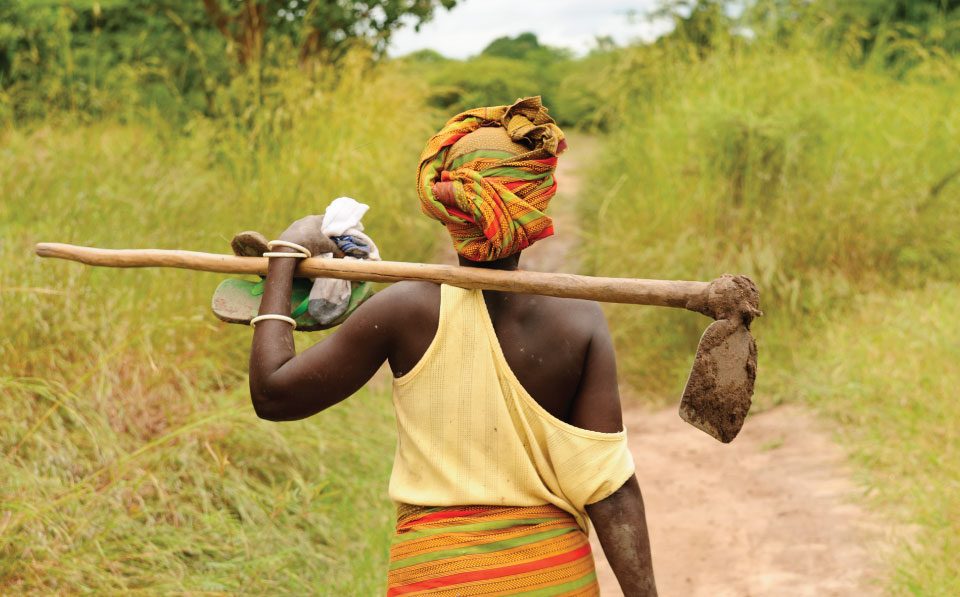Sub-Saharan Africa falling short in grain production

RSA table grapes to bounce back
September 4, 2018
Petrol price is still a problem for the agricultural industry
September 7, 2018
Sub-Saharan Africa has a big population, and it has a lot of land. However, the technical and economic challenges that farmers face in the region mean that it is dependent on grain imports to feed its population. Some sub-Saharan countries have managed to become suppliers for their neighbors.
In the OECD-FAO Agricultural Outlook 2018-2027, the two UN organizations highlight basic problems of sub-Saharan agriculture.
“Despite accounting for over 13% of the world population and close to 20% of global agricultural land, sub-Saharan Africa’s share of global agricultural output is relatively low,” the OECD-FAO said. “Agricultural production is constrained by challenging agro-ecological conditions, limited access to and utilization of technology, and the fact that economic growth in many cases remains only marginally ahead of population increases.”
The Outlook noted that sub-Saharan Africa’s most important agricultural commodity is “other coarse grains,” which includes millet, sorghum and teff. It accounts for 14% of world production of grains in the category. It forecasts a 30% increase in crop production in the next decade with growing maize (corn) output.
“Fertilizer, pesticides, improved seeds, and other technologies such as mechanization and irrigation have the potential to introduce substantial productivity gains, as adoption is typically low among the small-scale production units that characterize the region,” the OECD-FAO said.
Although the region’s food security will continue to depend on imports, some African countries have become regional providers of certain products.
“Maize is one example, where Zambia consistently produces an exportable surplus,” the report noted. “Similarly, yield improvements in teff production in Ethiopia will allow the country to account for nearly one-fifth of the world’s production growth in other coarse grains.”
The OECD-FAO pointed out that there are emerging challenges.
“The recent emergence of the Fall Armyworm, which has affected 28 countries across the region, could have serious implications for the region’s expansion of maize, rice, sorghum, sugarcane and soybean production and, by extension, its food security,” the report said.
According to the International Grains Council (IGC), the total grains production of sub-Saharan Africa will be 118.6 million tonnes in 2018-19, down from 121.9 million the year before. It highlights Ethiopia, where production will rise to 19.6 million tonnes from 19 million the year before, Nigeria, with production up to 19.4 million tonnes from 19.1 million, South Africa, where production is set to fall to 14.6 million tonnes from 15.4 million, and Tanzania, where production is seen rising to 6.9 million tonnes from 6.6 million.
According to an attaché report published in March, factors in Ethiopia’s strong production include continued investment in improved seeds, fertilizers, and mechanization.
“It should be noted that while there are areas with grain surpluses, the country as a whole does not have enough grain as evidenced by imports of wheat and sorghum for food aid and the bread subsidy,” the attaché report on Ethiopia said.
Wheat hectares declining
South African farmers are cutting area, according to an attaché report from that country.
“The declining trend in hectares planted with wheat in South Africa will continue,” in 2018-19, the attaché report said, while “commercial corn producers will cut area by 10% to 2.1 million hectares.”
Wheat plays a relatively small part in sub-Saharan Africa’s grains production, with the region’s crop forecast by the IGC to be 7.6 million tonnes in 2018-19, compared to 7.3 million the year before. Ethiopia with an unchanged crop of 4.5 million tonnes and South Africa with a 2018-19 crop of 1.8 million, up from 1.5 million, are the main producers.
“For more than a decade, Ethiopia’s wheat production has shown steady growth, increasing more than 50% since MY08-09,” the attaché said. “With little change to area harvested, most of this growth is attributed to better yields resulting from expanded access to improved seed, mechanization, minimal pest and disease pressure, as well as the opening of commercial farms.
“These yield-improving investments were largely made possible because farmers were able to make a little extra from the strong local wheat prices.”
Wheat’s problem in South Africa is that “in a free market environment, producers prefer to plant more profitable crops such as canola, oats, corn and soybeans,” according to the attaché in South Africa.
The importance of maize
Maize is much more important. The region’s total crop is forecast by the IGC to be 68.5 million tonnes in 2018-19, compared to 72.2 million the year before. South Africa is the leading producer with its crop forecast at 12.3 million tonnes, down from 13.4 million tonnes the year before, followed by Nigeria with an unchanged 11 million tonnes, and Ethiopia, which is set to produce 7.9 million tonnes in 2018-19, up from 7.5 million the year before.
South African producers are switching maize area to more profitable oilseeds, while in Nigeria “high local demand and increasing prices, as well as the GON’s (government of Nigeria’s) controlled imports (import permit policy), are expected to spur the growth,” a report from that country said.
The attaché in Ethiopia said that, for maize, the “anticipated increase is partially driven by an expected increase in area planted due to higher corn prices, which climbed more than 40% from January to December in CY17,” but noted that its forecast assumes “favorable weather conditions, sufficient availability of inputs, and minimal disease and pest pressures, especially fall army worm.”
The OECD-FAO report explained that maize is a primary source of calories in Sub-Saharan Africa, contributing about 19% of calorie availability on average.
“Consumers prefer non-GMO white maize, typically produced locally or imported from within the region,” the report noted. “Production is mostly low-input, rain-fed and smallholder-based, resulting in significant local yield variability.
“Local deficits are offset mostly through intra-country and regional trade, where such flows are impeded, production volatility threatens local food security. Regional trade within Sub-Saharan Africa accounts for about 5% of food consumption, but this figure varies considerably by country. South Africa, Zambia, Uganda and Ethiopia are consistent surplus producers; Malawi, Mozambique and Tanzania are either exporters or importers depending on weather conditions.”
Barley production, forecast by the IGC to be 2.6 million tonnes in 2018-19, up from 2.4 million the year before, is dominated by Ethiopia, with a forecast crop of 2.2 million, up from 2.1 million.
“This anticipated increase is primarily being driven by the growing demand for malt barley used in beer production,” the attaché in Ethiopia said.
Sorghum output rising
Sorghum is a major crop in the region with production expected to reach 27.2 million tonnes in 2018-19, up from 27.1 million the year before. Nigeria is the biggest producer, with a crop of 6.9 million tonnes forecast for 2018-19, up from 6.6 million the year before. Sudan follows with an unchanged 5.7 million crop, followed by Ethiopia, with an also unchanged crop of 4.1 million tonnes.
For Nigeria, the local attaché noted that “the resurgence of Boko Haram (BH) activities in the major sorghum producing region is expected to limit area harvested with many farmers dislodged and access to farms risky.”
“Better yields of sorghum in Nigeria have resulted from increased private sector partnership with farmers,” according to the attaché. “As industrial demand for sorghum continues to increase, more users are expected to increase their partnerships with farmers, providing them farming inputs such as chemicals and improved seeds, storage and processing facilities, training on better farm management techniques, as well as funding through some out-grower arrangements.”
Sub-Saharan Africa’s total grains imports in 2018-19 are forecast by the IGC at 29.4 million tonnes, up from 27.6 million the year before. The leading importer is Nigeria, which will import 5.6 million tonnes of grain in 2018-19, up from 5.5 million. It is followed by Kenya, which will import 3.3 million tonnes, up from 3.2 million, Sudan, which will import 2.8 million tonnes, up from 2.7 million, and South Africa, which will import an unchanged 2.1 million tonnes.
Among the countries in the region, only South Africa is listed by the IGC as a notable exporter. It is forecast to send an unchanged 2.6 billion tonnes abroad in 2018-19.
Most of the region’s grains imports are in the form of wheat, with a total of 24.8 million tonnes set to be imported by its countries in 2018-19, up from 24.1 million tonnes the year before. The biggest importer is Nigeria, set to bring in 5.2 million tonnes, up from 5.1 million. Next comes Sudan, with forecast imports of wheat at an unchanged 2.6 million tonnes, followed by Kenya with imports, also unchanged, of 2.1 million tonnes.
The region’s maize imports are forecast at 3.8 million tonnes, up from 2.8 million the year before. The biggest single importer of maize is Kenya, which is set to bring in an unchanged 1 million tonnes. South Africa is forecast to export 2.3 million tonnes of maize in 2018-19, up from 2.2 million the year before.
The countries of Sub-Saharan Africa are also forecast to import an unchanged 100,000 tonnes of barley.
Sourced: World Grain



